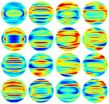Breast cancer study raises hope of therapy to stop tumor spread
2015-06-08
(Press-News.org) Scientists have discovered a trigger that allows breast cancer cells to spread to the lungs.
They have found that blocking the signals in mice with breast cancer greatly reduces the number of secondary tumours found in the lungs.
The findings could lead to new therapies that stop the progression of breast cancer, the researchers at the University of Edinburgh say.
The majority of deaths from breast cancer are caused by the tumour spreading to other parts of the body. The lung is often one of the first organs to be affected.
Researchers at the University's MRC Centre for Reproductive Health investigated the role that immune cells called macrophages play in helping cells from the original tumour to spread.
Their previous research has shown that breast cancer cells need the support of macrophages to invade the lungs and set up secondary tumours.
The team has discovered that macrophages require signalling molecules called chemokines to communicate with breast cancer cells.
When they blocked these signals in mice, they found that the number of secondary tumours in the lungs was reduced by up to two thirds.
Blocking the signals helped to stop the cancer cells from getting into the lungs from the blood stream. It also hindered those that did get into the lungs from establishing themselves and forming new tumours.
Human cells seem to use the same chemokine signals to communicate with each other. The researchers hope their findings may one day translate into new treatments to stop breast cancer from spreading.
The results suggest that targeting a chemokine receptor signalling molecule called CCR1 may result in fewer unwanted side effects for patients while stopping the spread of breast cancer cells.
The study is published today in the Journal of Experimental Medicine. It was funded by the United States Department of Defence, National Institutes of Health (US), Medical Research Council (UK) and the Wellcome Trust.
Professor Jeffrey Pollard, Director of the MRC Centre for Reproductive Health at the University of Edinburgh, said: "Our findings open the door to the development of treatments that target the tumour microenvironment, which may stop the deadly progression of breast cancer in its tracks."
INFORMATION:
ELSE PRESS RELEASES FROM THIS DATE:
2015-06-08
NEW YORK (June 8, 2015) - Whole genome sequencing can quickly isolate the specific strain of bacteria causing an outbreak, identify the source of contamination, and enable rapid infection prevention to stop the spread of infection, according to a study published today. The findings, based on the examination of an outbreak of Pseudomonas aeruginosa in an Australian neonatal unit, appear in Infection Control & Hospital Epidemiology, the journal of the Society for Healthcare Epidemiology of America.
"Bacteria, such as P. aeruginosa, have evolved into many strains and frequently ...
2015-06-08
WASHINGTON, June 8, 2015 -- With Caitlyn Jenner's recent transition in the news, more attention is being paid to the transgender community. A big part of gender transition is hormone replacement therapy (HRT). This week, Reactions talks about the chemistry of HRT and what happens when the body undergoes major shifts in estrogen and testosterone -- two very powerful hormones. Check it out here: http://youtu.be/l5knvmy1Z3s.
Subscribe to the series at http://bit.ly/ACSReactions, and follow us on Twitter @ACSreactions to be the first to see our latest videos.
INFORMATION:
The ...
2015-06-08
WASHINGTON -- A new way of rapidly identifying bacteria, which requires a slight modification to a simple microscope, may change the way doctors approach treatment for patients who develop potentially deadly infections and may also help the food industry screen against contamination with harmful pathogens, according to researchers at the Korea Advanced Institute of Science and Technology (KAIST) in Daejeon, South Korea.
Described this week in The Optical Society (OSA) journal, Optics Express, the new approach involves bouncing laser light off individual bacteria under ...
2015-06-08
SAN FRANCISCO (June 8, 2015) -- Scientists from the California Academy of Sciences are celebrating World Ocean's Day with a slew of brand new marine discoveries--more than 100 species that are likely new to science. The Philippines is home to the most biologically diverse waters on Earth, and remains the centerpiece of the Academy's multi-year exploration of the Coral Triangle's biological treasures. Over the course of this seven-week undertaking, funded by the National Science Foundation, scientists collected countless marine specimens, including rare and new species of ...
2015-06-08
Bistatic/multistatic SAR has attracted global attention and made remarkable progress recently. Many key techniques have been overcome. Aiming to grasp the developing trend of the bistatic/multistatic SAR, the corresponding special issue has been compiled and published on SCIENCE CHINA Information Sciences, no. 6, 2015, which is devoted to integrate the key techniques together such as bistatic imaging, interferometry, change detection and the experiment with high quality etc.
The modified Stolt map in the frequency domain was introduced in the bistatic imaging algorithm ...
2015-06-08
The train control system is the heart of Chinese high-speed railways, which is a core technology to ensure safe operation as well as high throughput of trains (see Figure 1). The correctness of the train control system is closely related to people's life and property. How to guarantee the correctness of train control system is a grand challenge in both software engineering and control theory. Recently, a group of Chinese researchers proposed an approach to verify the correctness of train control system by combining simulation and formal verification, which was published ...
2015-06-08
New research from Uppsala University shows promising progress in the use of stem cells for treatment of spinal cord injury. The results, which are published in the scientific journal Scientific Reports, show that human stem cells that are transplanted to the injured spinal cord contribute to restoration of some sensory functions.
Traffic accidents and severe falls can cause ruptures of nerve fibers that enter/exit the spinal cord. Most commonly, these avulsion injuries affect the innervation of the arm and hand, and lead to paralysis, loss of sensation and cause chronic ...
2015-06-08
A fully renewable energy system, including all energy consuming sectors, is not only a possible but a viable solution for Finland, according to a new research. Researchers from Lappeenranta University of Technology (LUT) have investigated renewable energy system options for Finland in 2050. Results indicate that a fully renewable energy system is possible, and represents a competitive solution for Finland with careful planning.
In order to achieve the national greenhouse gas reduction targets for 2050, all sectors of the energy system need to be nearly emission free ...
2015-06-08
Scientists in the STAR collaboration at the Relativistic Heavy Ion Collider (RHIC, http://www.bnl.gov/rhic/), a particle accelerator exploring nuclear physics and the building blocks of matter at the U.S. Department of Energy's Brookhaven National Laboratory, have new evidence for what's called a "chiral magnetic wave" rippling through the soup of quark-gluon plasma created in RHIC's energetic particle smashups.
The presence of this wave is one of the consequences scientists were expecting to observe in the quark-gluon plasma--a state of matter that existed in the early ...
2015-06-08
Researchers at the KU Leuven Centre for Surface Chemistry and Catalysis have found a more eco-friendly way to derive lignin - a paper industry waste product - from wood and convert it into chemical building blocks. The resulting chemicals can be used in paint, insulation foam, and several other products. The researchers published their findings in the journal Energy & Environmental Science.
Lignin is a substance in the cell walls of plants that strengthens their structure. When wood is processed into paper pulp, lignin is produced as a waste product. Researchers have ...
LAST 30 PRESS RELEASES:
[Press-News.org] Breast cancer study raises hope of therapy to stop tumor spread



